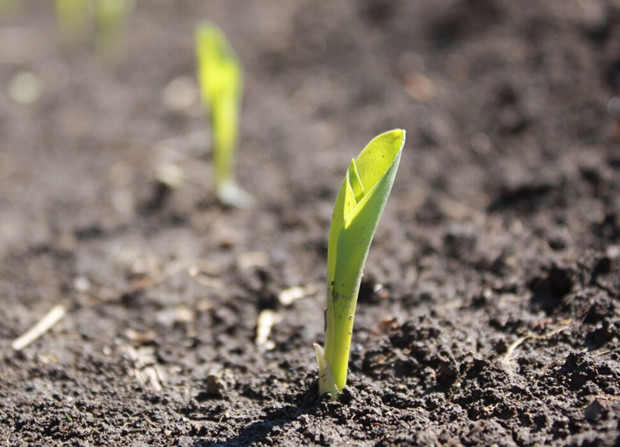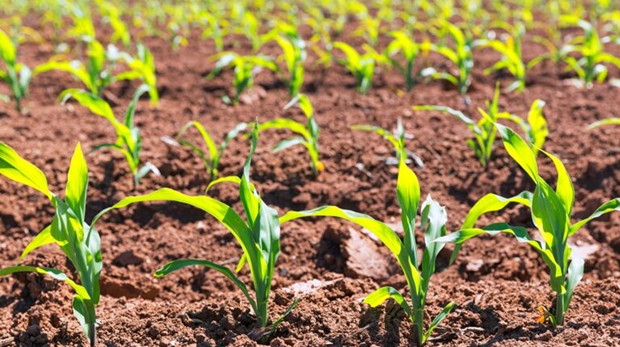
There are several tips we should notice in corn planting:
1. Corn plants are picky about their soil. Work in aged manure or compost the fall before planting and let over winter in the soil. Make sure the soil temperature is above 60°F (16°C) for successful germination. (Up to 65°F/18°C for super sweet varieties.) In colder zones, the ground can be warmed by a black plastic cover if necessary. Plant seeds through holes in the plastic. Corn will not germinate at temperatures below 50 degrees F, and its growth rate slows considerably with cool temperatures. Therefore, exposing your expensive seed to adverse conditions is asking for big trouble.
Avoid planting fields while soils are marginally wet. Your goal associated with planting is to optimize precision and achieve uniform, vigorous stands. Planting wet soils will likely inhibit planter performance, create persistent issues and compound problems with abundant rainfall that hinder stands. Tire traffic from tractors and equipment produce soil compaction that inhibits root and plant growth. Seed furrow compaction can inhibit moisture imbibition by the seed as well as severely restricting seedling root growth. You simply have to be patient enough to avoid these issues. If your corn planting intentions are less than normal, you have even further incentive to plant during favorable conditions.
Plant well-drained soils first. Heavy-textured clay soils naturally stay wet longer, leading to more stand issues and failure, particularly when planting early.
2. Plant seeds outdoors two weeks after the last spring frost date.
3. Plant seeds 1.5 to 2 inches deep and 4 to 6 inches apart. Rows 30 to 36 inches apart. Deeper planting is not usually needed unless soils are really dry and you need to place seed deeper to reach moisture, which is quite rare in this region. Deep planting will likely expose seeds to lower soil temperature and more moisture, which can hinder seedling development. Thus, keep planting depth moderate, particularly when planting early, or during less favorable conditions.
4. For sufficient pollination, plan your plot right. Don’t plant two long rows, rather, plant corn blocks of at least four rows.
5. Don’t knock down your beds any further than necessary. Raised beds are intended to provide relief to seedlings from saturated soils. Reducing bed height diminishes their effectiveness, while offering a cooler environment for your seedlings. This is a no-win scenario.
6. You may choose to fertilize at planting time; corn is meant to grow rapidly. If you are confident that the soil is adequate, this can be skipped.
7. Water well at planting time.
8. Moderating planter ground speed will enhance stand uniformity and corn yields. Top producers such as new world record corn producer David Hula say, “Even spacing and emergence are critical to high corn yields.” Increasing planter ground speed hinders planter performance, stand uniformity and corn yield. Although new technology and after-market equipment may improve seed metering performance, high ground speed still reduces stand uniformity achieved. Increasing speed increases inertia, causing seeds to roll and/or bounce more during planting, creating poorer seed spacing and seeding depth variability. For instance, even at a slow speed of 4 mph, you are dropping about 15 seeds per second per planter unit — and each mile per hour increases the distance covered 18-inches per second, so achieving a picket fence stand is no simple task. Do your part to improve your outcome by slowing down.






